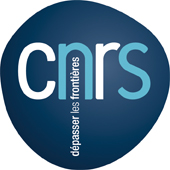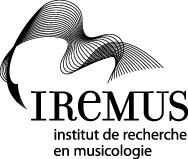WRITINGS
MIZUNO Mikako / 水野 みか子
Sound Arts, Sound Performance and Sonic Arts – Alternative Presence of Japanese Electroacoustic Music
Edition: Proceedings of the Electroacoustic Music Studies Conference, Berlin, Paris, Electroacoustic Music Studies Network, 7 p., 2014.
Date: 2014
Region: JAPAN
Origin: GERMANY
Type of media: Article
Language: English
Editor: M.B.
Comment:
Abstract:
The Japanese live electronic or Japanese style of algorithmic composition struggled for new forms of expression and presentation and created the alternative styles. The terms ‘live electronic’ and ‘algorithmic composition’ originated Euro-American electroacoustic music but the Japanese artists like Group Ongaku or Method Machine modified the concepts and created their unique styles.
Starting with the general definition of sound arts by Helga de la Motte-Haber, which would be applied to the survey of Japanese sound arts from Group Ongaku to Zombie Music, I will focus on two points: the terminology of ‘live electronic’ which was connected to the space concept in Group Ongaku, and ‘media’ as an aesthetic phase of music in the discipline of Method Machine.
Helga de la Motte-Haber admitted in 1999 that the piece like Steve Reich’s Pendulum Music (1968) had exceeded the limitation of music as art genre and that the artists of fine arts invaded into music as sound creation. And Klangkunst was referred as ‘toning objects’ and ‘sounding spaces’ by him. Depending on the framework of de la Motte-Haber, I discuss the terminology of the genres and the media as method.
First, I discuss about the works as well as the aesthetic statements of Akiso Suzuki, Takehisa Kosugi, Yasunao Tone, Yukio Fujimoto who had started their artistic career in 1960’s. As the direct roots of them, I discuss about Group Ongaku.
The second point concerns ‘media’ as transmitting system for the artists to have social communication. This framework suited to the key points of Method Machine manifesto, which was announced through Internet on the New Year’s Day of 2000. The pieces by Masahiro Miwa are deduced from the algorithmic composition, which were very unique in the point that the algorithm simulates the algorithm itself.
Group Ongaku repeated improvisational performances in small rooms of Tokyo University of Arts or of Tokyo University before their first public concert in Sogetsu Kaikan (1961). Their improvisation has been succeeded to Taji Mahar Travelers, founded in 1968. According to Minao Shibata, the members played (or used) violin, harmonica, bass, vibraphone, santool and other ethnic instruments, Japanese traditional instruments and some gadgets. The interplay between the performers’ narrative process and the spirit of the audience was occurring in a common ‘space’.
The musicologist Koji Sano wrote in the article “Wave Music” in Transonic (n° 6, 1975), that the Japanese live-electronics in 1970’s were composed and performed with electronics and their identity was in their spatial concept, which is not constructed on the time line. The concert held in Sogetsu Kaikan in Tokyo in 1961 by Group Ongaku with the title “Improvisation and objets sonores” will show their essence.
Masahiro Miwa, a founder of Method Machine and prizewinner of Golden Nica in Ars Electronica, made the audience do some physical training based on his minute indications. The purpose of physical training is to realize the virtual story with the real human body. This method had already been presented in Ordering a Pizza de Brothers! by Formant Brothers originated in 2003. Ordering a pizza as a fictional story evaluates the artificial voice created by their original formant synthesis. Even though the fictional purpose is not achieved, the performance is evaluated in the other dimension than the fictional goal. Zombie music by Taro Yasuno realizes a new type of communication through sound performance not with human body but with his automata and video.





